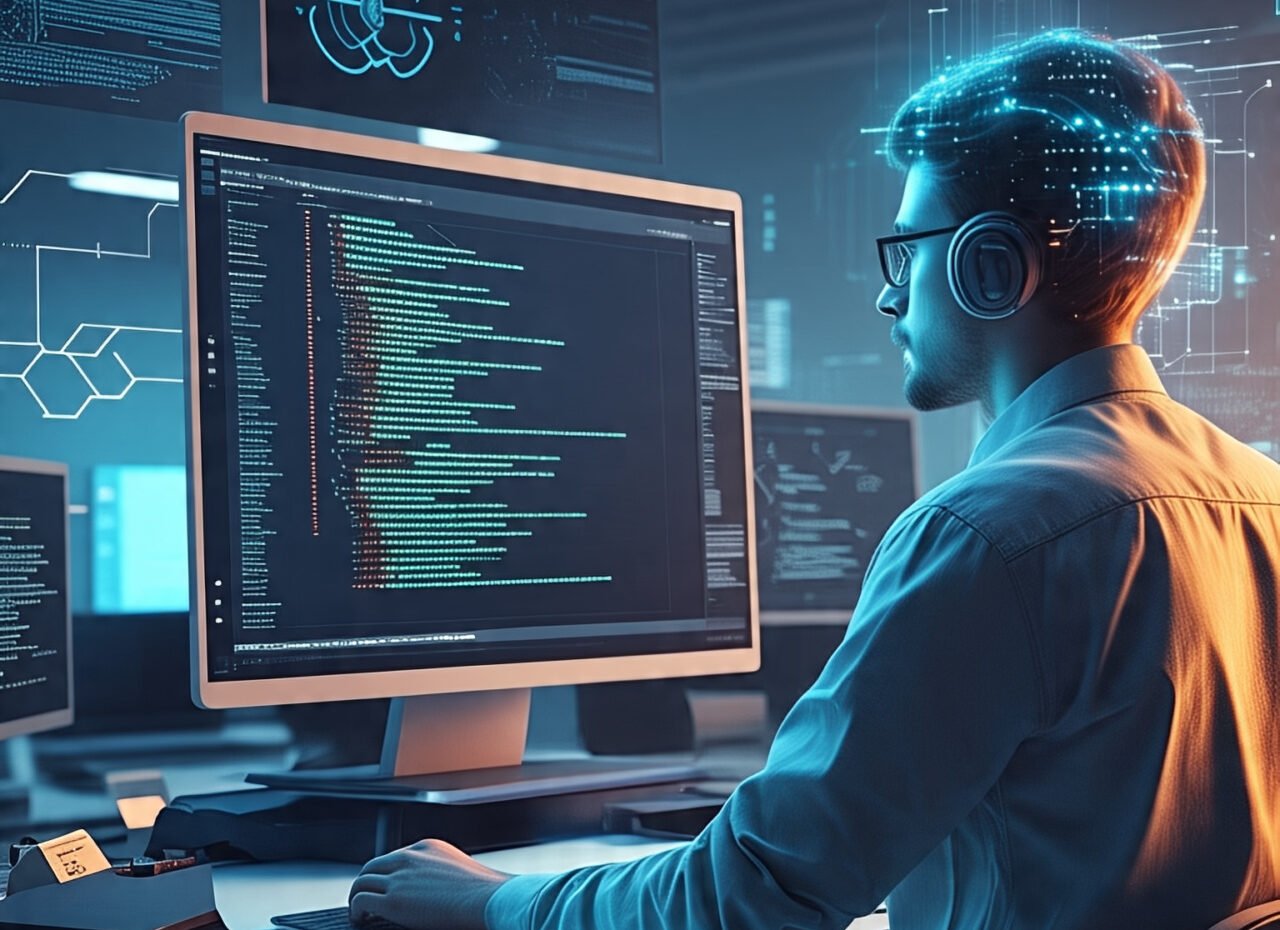- June 12, 2025
- by admin
From IDE to AI: How Development Environments Are Evolving
If you’ve been a software developer for even a few years, you’ve probably noticed how rapidly our tools have matured. The Integrated Development Environment (IDE) that was once a glorified text editor has now become a powerful ecosystem capable of intelligent assistance, real-time collaboration, and even predictive programming.
This evolution isn’t just about better tooling; it’s about the growing influence of artificial intelligence within our development workflows. As the boundaries between human logic and machine learning blur, our approach to writing, debugging, and deploying code is transforming at an unprecedented pace.
This blog explores how development environments have evolved from simple IDEs into AI-powered assistants and what that means for developers, teams, and the future of software engineering.
A Brief Look Back: The Traditional IDE
In the early 2000s, IDEs like Eclipse, NetBeans, and Visual Studio revolutionized the developer experience. They consolidated everything a programmer needed editor, compiler, debugger, terminal into a single interface. At the time, that was a massive leap forward from working in separate terminal windows or configuring editors manually.
These tools gave developers:
- Syntax highlighting
- Intelligent code completion (via static analysis)
- Version control integration
- Basic debugging features
But while these features made coding easier, the IDE was still reactive. It could only respond to what you typed; it didn’t understand your code contextually or proactively assist in design and logic.
The Shift Toward Smart Development
The first hints of “smart” environments came through plugins and extensions. Linters, for example, offered real-time code analysis. Static type checkers like TypeScript or MyPy started reducing the number of runtime errors by catching issues earlier.
But the real game-changer came when AI and machine learning were integrated into the IDE experience.
AI in Today’s IDEs: The New Norm
Modern development environments are starting to feel more like collaborators than tools. A few notable transformations include:
1. Intelligent Code Completion
Traditional autocomplete features relied on pattern matching. Today’s AI-driven tools like GitHub Copilot, Amazon Code Whisperer, or Tab Nine go several steps further. They:
- Suggest complete functions based on minimal input.
- Understand variable context and prior function definitions.
- Learn from millions of public code repositories.
Instead of just guessing based on syntax, they anticipate your next move based on intent.
2. Error Detection and Automated Fixes
Many IDEs now offer AI-powered static analysis. They not only point out errors but also suggest fixes based on common patterns in public codebases.
For instance, if a loop is written inefficiently, the IDE may recommend a more optimal structure. In security-sensitive projects, tools like DeepCode and Snyk scan for vulnerabilities and explain the risks using natural language.
3. Natural Language Code Interaction
Developers can now write comments like “create a function to validate email” and AI tools will generate the corresponding code. This is especially helpful for junior developers or teams working in unfamiliar stacks.
Real-World Impact on Development Workflows
The productivity gains are substantial, but the real benefit lies in cognitive offloading. Developers no longer need to remember every syntax rule or language-specific API. They can focus more on logic, architecture, and problem-solving.
Moreover:
- Prototyping is faster. Teams can test multiple ideas quickly.
- Code reviews are more insightful, as AI tools flag potential issues before the pull request.
- Onboarding new developers becomes easier with suggestions and contextual code explanations.
Challenges That Remain
Despite the progress, there are still limitations and concerns:
1. Over-reliance on AI Suggestions
Developers must remember that AI suggestions are often drawn from public repositories, which may include bad or outdated practices. Blindly accepting suggestions can lead to technical debt.
2. Security Risks
AI can introduce vulnerabilities if it suggests code that hasn’t been vetted or understood. This is especially critical in regulated industries like fintech or healthcare.
3. Loss of Deep Learning
When developers use AI for every task, there’s a risk of losing the deeper understanding of how things work under the hood. This could impact their ability to troubleshoot or optimize complex systems in the long run.
What Does the Future Hold?
The trajectory is clear: AI will become an even more integral part of development environments. We’re already seeing previews of this in IDEs like Cursor (a Copilot-native code editor), or tools that combine natural language querying with real-time debugging.
Expect future environments to include:
- Semantic understanding of project goals, not just code.
- Auto-refactoring based on performance metrics.
- Integrated AI QA testing that writes and maintains test cases based on changing code.
- Conversational debugging, where devs can ask the IDE why a bug occurred and get a clear answer.
We’re at the beginning of a new era in software development. The evolution from IDE to AI-assisted environments isn’t just about speed it’s about enabling developers to think and create at a higher level.
Instead of fearing AI as a replacement, we should embrace it as a multiplier of human capability. The best developers will be those who understand how to collaborate with these intelligent tools knowing when to leverage them, when to question them, and when to go beyond what they can offer.
As we continue to innovate, the real challenge won’t be keeping up with the tools it will be learning to work with them wisely.
.

